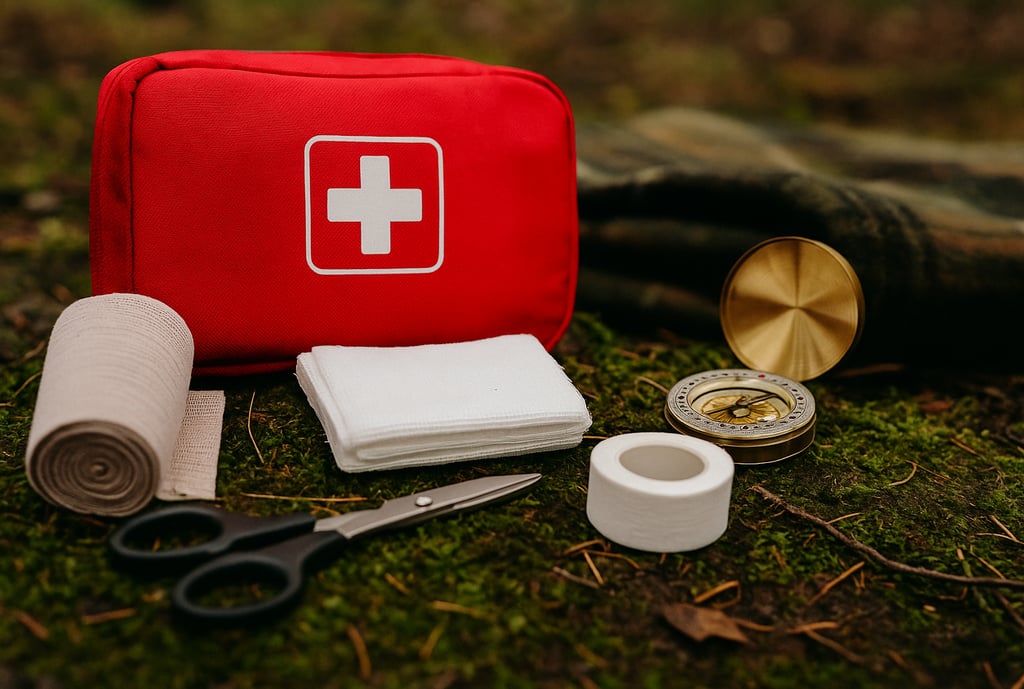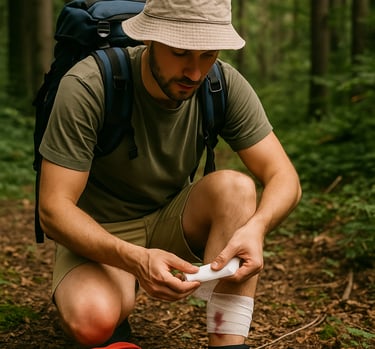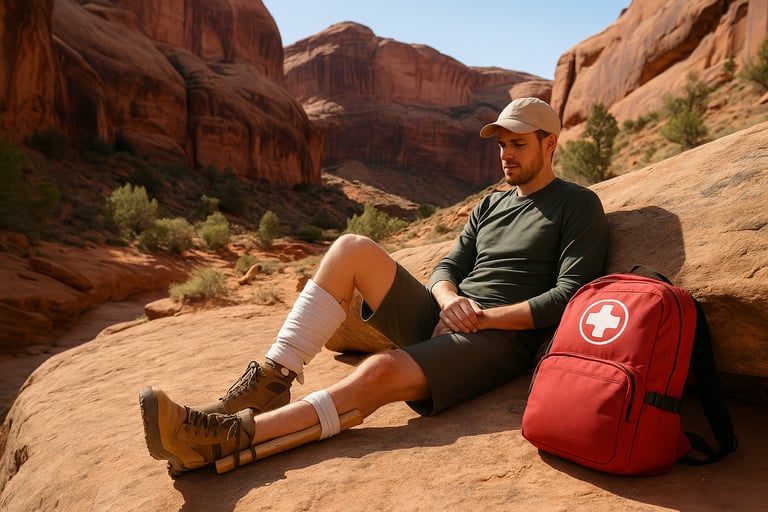Wilderness First Aid vs Standard First Aid: What’s the Real Difference?
Discover the key differences between wilderness first aid and standard first aid. Learn why wilderness medical training is essential for anyone heading into remote areas.


Wilderness First Aid vs Standard First Aid: What’s the Real Difference?
Why This Comparison Matters for Outdoor Enthusiasts
When you head into the backcountry, having first aid knowledge isn’t just helpful — it can be a literal lifesaver. But not all first aid training is the same. The difference between wilderness first aid and standard first aid lies in how you apply care when you’re far from help, and knowing this distinction can make all the difference when emergencies strike.
Standard first aid is designed for situations where emergency services are nearby. Think of cuts at home, minor sprains at work, or fainting episodes at a sporting event — situations where help can arrive within minutes. Wilderness first aid, on the other hand, prepares you to handle serious medical issues in remote environments where you may be hours or even days away from professional help.
What Is Standard First Aid?
Standard first aid refers to the set of techniques and procedures taught to treat injuries and illnesses in settings where emergency services are easily accessible. Courses typically cover CPR, wound care, choking, burns, and other common injuries. The main focus is to stabilize the patient until professional medical care can take over.
Most people take a standard first aid class through work, school, or community organizations. These classes are often short, practical, and focused on immediate response. While essential, this type of training assumes you’ll be handing off the situation to EMTs relatively quickly — something that simply isn’t possible in the wilderness.
What Makes Wilderness First Aid Different?
Wilderness first aid is built around self-reliance. It teaches you how to assess and manage injuries when medical help isn’t close by. You’ll learn how to improvise with limited gear, how to monitor someone over long periods, and how to make tough decisions like when to evacuate and how.
Unlike standard first aid, wilderness training emphasizes extended care scenarios. That means understanding how to keep someone stable overnight, how to prevent infection in remote areas, and how to build splints or slings using whatever is available. You’ll also learn how to recognize signs of dehydration, hypothermia, and shock — and how to treat them using wilderness techniques.
When you're managing injuries in remote environments, knowing how to adapt is everything. That includes learning how to make a wilderness splint or sling using natural materials when traditional gear isn’t available. Being able to improvise medical care on the fly — especially for fractures or sprains — is a core part of wilderness response.
Real-World Scenarios: A Comparison
Imagine someone twists their ankle badly on a hiking trail ten miles from the nearest road. In a city, standard first aid would have you ice the injury and call 911. In the wilderness, you’d have to assess the severity, immobilize the ankle with natural materials, reduce swelling, and potentially help the person walk out or stay put overnight.
Or consider a deep cut. In an urban environment, you’d clean it and wait for EMS. In the backcountry, you may need to apply pressure for much longer, create a dressing from limited materials, and monitor for infection without backup.
Wilderness first aid forces you to think differently. You rely on basic principles but apply them in more creative, flexible ways — always assuming help could be hours or days away.
Should You Learn Wilderness First Aid?
If you spend any time in the outdoors — whether camping, hiking, hunting, or even road-tripping off-grid — learning wilderness first aid is a smart move. These skills give you confidence, preparedness, and the ability to respond when every second counts.
Courses are widely available through outdoor schools, survival training programs, and organizations like NOLS or SOLO. Some offer weekend intensives, while others are full certification programs. The investment of time and effort is minimal compared to the peace of mind and safety it provides.
Wilderness first aid isn’t just about treating wounds, it’s about thinking ahead. That’s why many outdoor survivalists also carry a well-rounded wilderness survival kit, which includes not only first aid tools but also items for hydration, signaling, and shelter. Knowing what to pack and how to use it can be just as important as medical knowledge.
Final Thoughts
Wilderness first aid and standard first aid are both critical — but they serve very different purposes. If you’re exploring the outdoors, don’t assume standard training is enough. The added knowledge from wilderness medical training equips you to handle serious injuries when there’s no cell signal and no ambulance on the way.
With a little preparation, you can turn a remote emergency into a manageable situation. And that kind of confidence is exactly what every outdoor adventurer needs.




© 2025. All rights reserved About | Privacy Policy | Terms and Conditions | Affiliate Disclosure | Disclaimer


